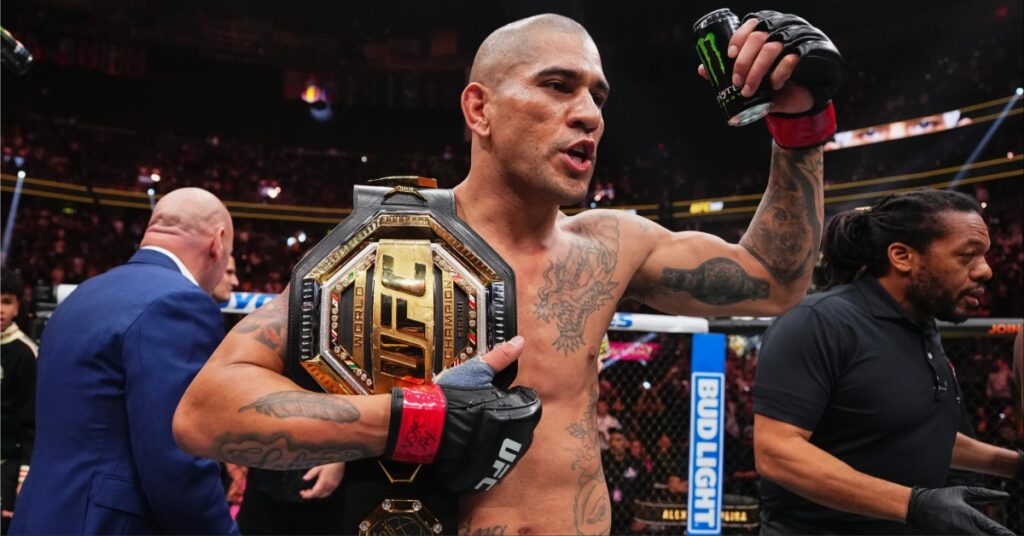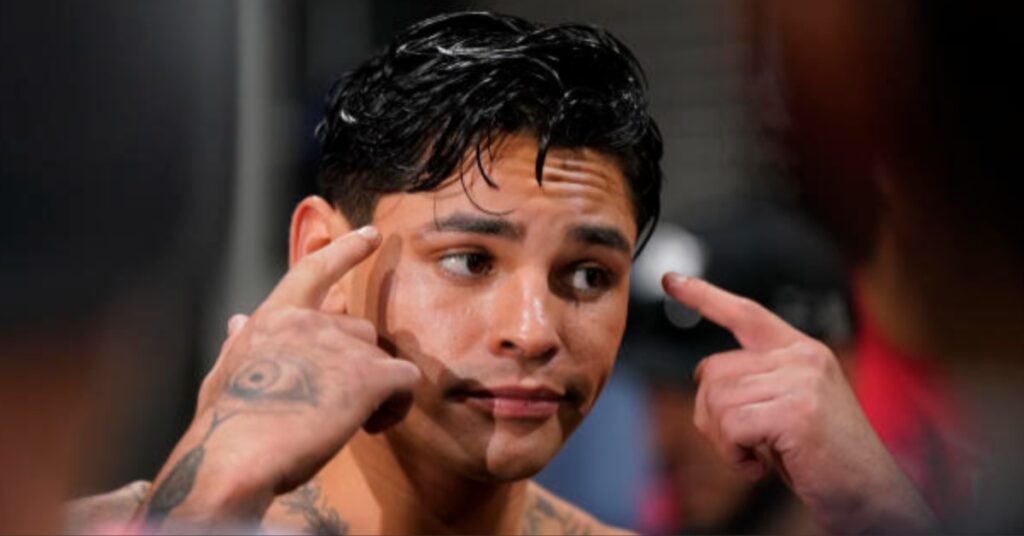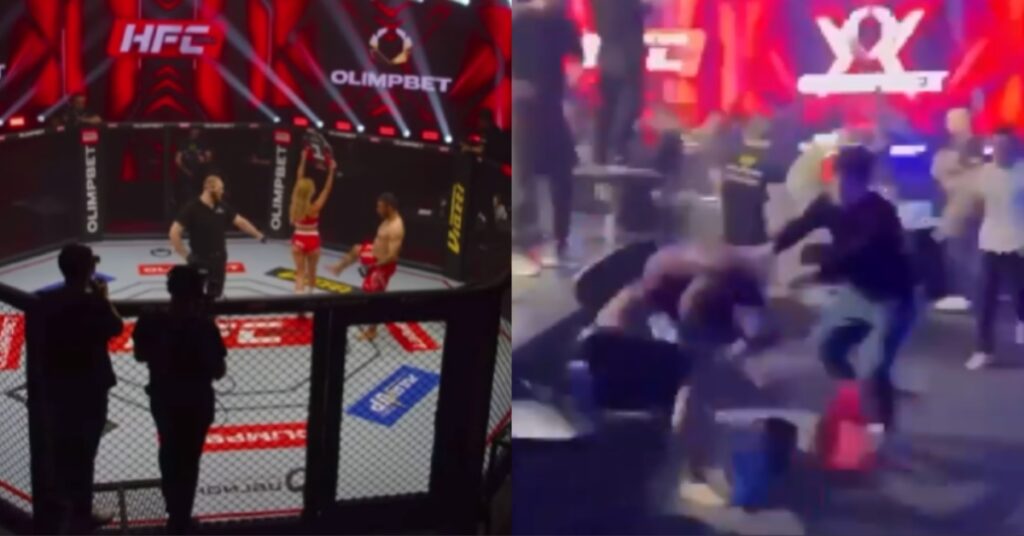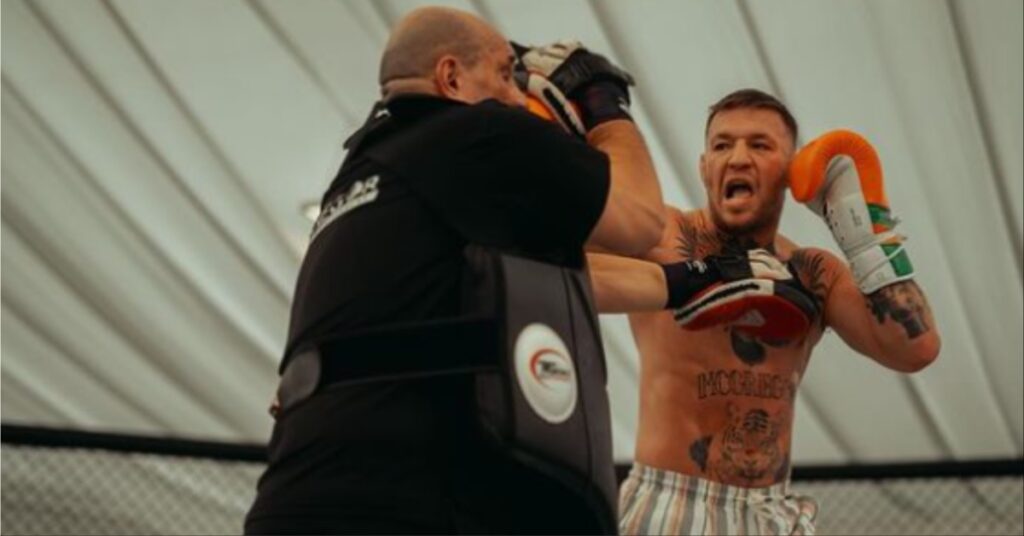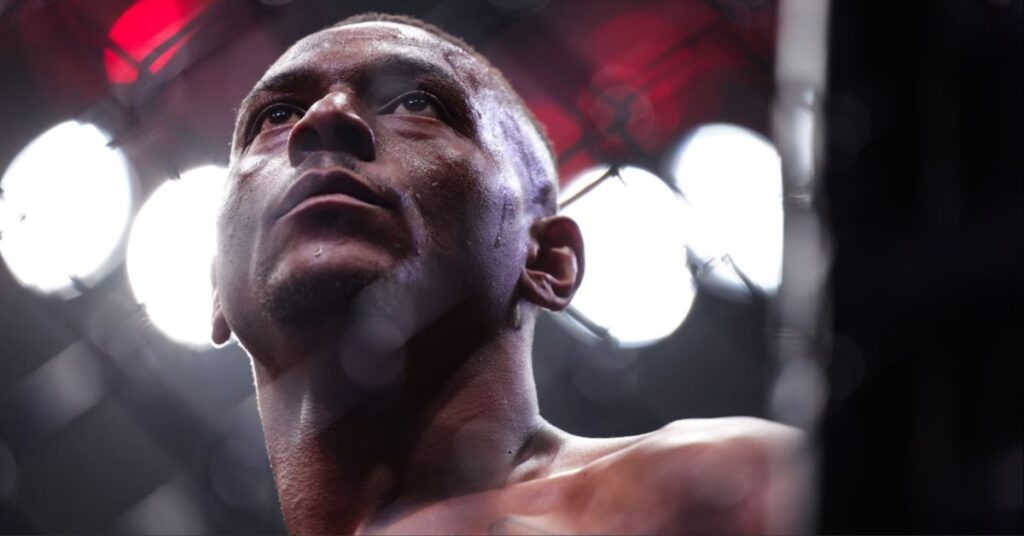Chinese Martial Arts: Explained
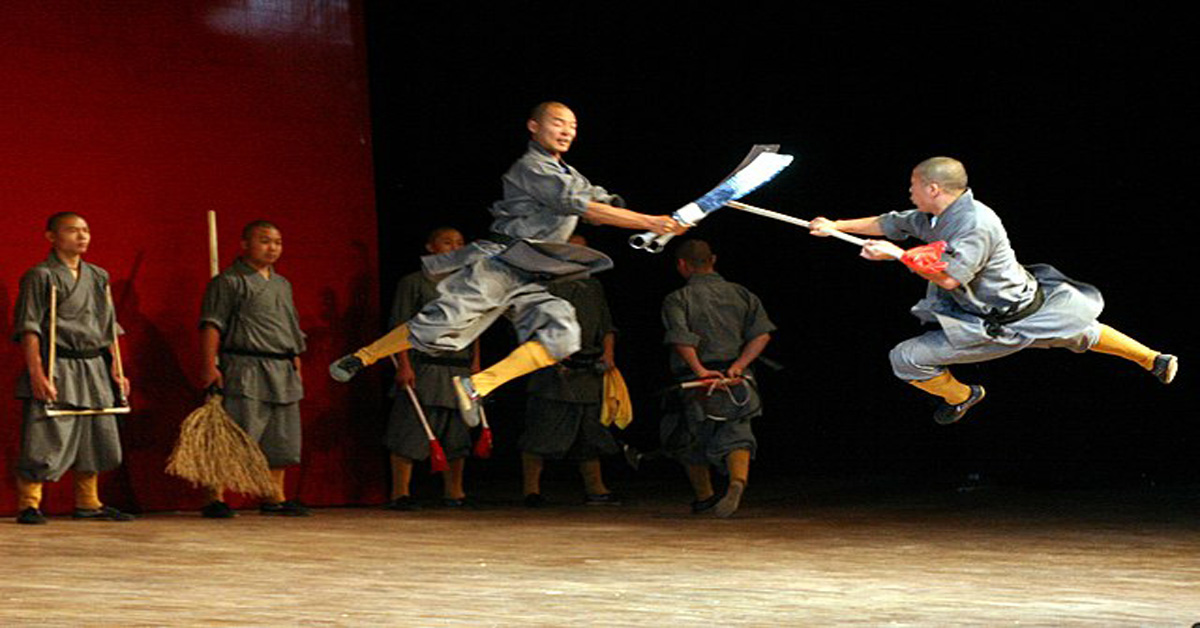
A majority of the martial arts styles of the world were developed in China. Have you ever wondered how many Chinese martial arts actually exist?
Here’s a complete list of all of the Chinese martial arts styles. See all of the Chinese fighting styles below with short overviews of each.
Contents
- 1 How Many Chinese Martial Arts Exist?
- 2 What Are Chinese Martial Arts Called?
- 3 Chinese Martial Arts Styles
- 3.1 Bafaquan (Eight Methods Boxing)
- 3.2 Bagua Zhang (Eight Trigrams Paw)
- 3.3 Bajiquan (Eight Extremities Boxing)
- 3.4 Bak Mei (White Eyebrow)
- 3.5 Chang Quan (long boxing)
- 3.6 Chin Na
- 3.7 Chow Gar
- 3.8 Choy Gar
- 3.9 Choy Li Fut
- 3.10 Chuo Jiao (Strike Foot)
- 3.11 Crane Style
- 3.12 Ditangquan (Ground Tumbling Boxing)
- 3.13 Dragon Style
- 3.14 Drunken Boxing (Zui Quan)
- 3.15 Duan Quan (Short Boxing)
- 3.16 Eagle Claw
- 3.17 Emeiquan
- 3.18 Fanzi (Rotating Style)
- 3.19 Feng Shou (Wind Hand Style)
- 3.20 Five Ancestors Boxing
- 3.21 Five Animals Styles
- 3.22 Fu Jow Pai
- 3.23 Fu Jan (Fujan) White Crane
- 3.24 Fut Gar (Buddhist Family)
- 3.25 Hei Hu Quan (Black Tiger Boxing)
- 3.26 Hou Quan (Monkey Fist)
- 3.27 Hung Fut
- 3.28 Hung Gar
- 3.29 Jow Gar (Jow-Ga) Kung Fu
- 3.30 Kuntao
- 3.31 Kunlunquan
- 3.32 Lai Tung Pai
- 3.33 Lama Pai
- 3.34 Lau Gar Kuen
- 3.35 Li Gar
- 3.36 Liu He Ba Fa (Water Style)
- 3.37 Long Quan (Longhua Quan)
- 3.38 Luohan Quan (Arhat Fist)
- 3.39 Mei Hua Quan (Plum-Blossom Boxing)
- 3.40 Mian Quan (Cotton Boxing)
- 3.41 Mizong Quan (Mizongi)
- 3.42 Mok Gar
- 3.43 Nan Quan (Nanquan)
- 3.44 Northern Praying Mantis
- 3.45 Northern Shaolin Kung Fu
- 3.46 Pak Mei
- 3.47 Pao Chui
- 3.48 Pigua Quan (Piguaquan)
- 3.49 Praying Mantis
- 3.50 Sanda (Sanshou)
- 3.51 San Soo
- 3.52 Shaolin Kung Fu
- 3.53 Shuai Jiao
- 3.54 Southern Praying Mantis
- 3.55 Tai Chi (Pushing Hands)
- 3.56 Tai Chi Quan
- 3.57 Tan Tui
- 3.58 Tien Shan Pai
- 3.59 Tong Bei Quan (Tongbeiquan)
- 3.60 Wing Chun
- 3.61 Wudang Quan
- 3.62 Xingyiquan
- 3.63 Yau Kung Moon
- 3.64 Yiquan
- 3.65 Yue Jia Quan (Yuejiaquan)
- 3.66 Ziranmen
How Many Chinese Martial Arts Exist?
There are around 60 different Chinese martial arts that are officially recognized. This number does not include the number of sub and hybrid styles of Chinese martial arts that may exist.
What Are Chinese Martial Arts Called?
Chinese martial arts are either referred to by the terms “Kung Fu” and “Wushu.” These are widely used umbrella terms for Chinese martial arts.
Chinese Martial Arts Styles
Bafaquan (Eight Methods Boxing)
Bafaquan, or Bafa for short, is a style of Kung Fu developed by Li De Mao during the Qing dynasty. It is the combination of five different Chinese martial arts styles.
- Fanziquan
- Paochui
- Tantui
- Tongbeiquan
- Xingyiquan
Bagua Zhang (Eight Trigrams Paw)
Bagua Zhang, or Banguazhang, is one of three Chinese martial arts taught at the Wudang School. It’s an internal martial art that consists of flowing-circular movements.
Bajiquan (Eight Extremities Boxing)
Bajiquan is a counter-attacking style of Kung Fu that consists of short-range elbow and shoulder strikes. Eight Extremities boxing, as it is also called, is one of the Chinese martial arts practiced by Chinese monks.
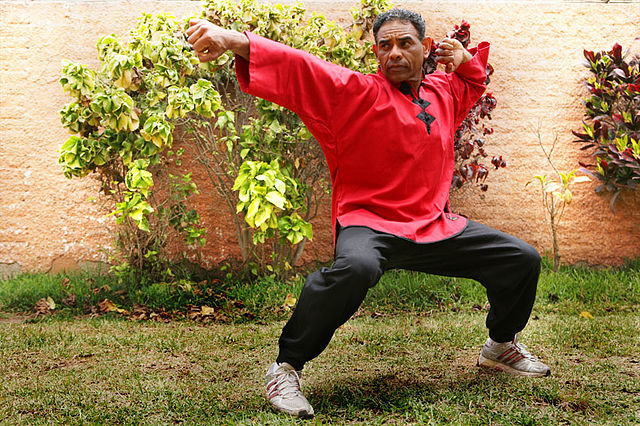
Bak Mei (White Eyebrow)
Bak Mei, or White Eyebrow, is a close-range style of Kung Fu that focuses on powerful short-hand strikes. Named after the styles of the Legendary 5 Elders.
Chang Quan (long boxing)
A northern Chinese style of long boxing that evolved into different Chinese martial arts.
Chin Na
Chin Na is a set of joint lock techniques that are used in many grappling Chinese martial arts. The name translates to English as “Lock-Catch.”
Chow Gar
Chow Gar is a southern Chinese martial art that the Hakka people practiced. It is one of four Praying Mantis styles of Chinese martial arts.
Choy Gar
Choy Gar is a snake-style variation of Kung Fu known for its low stance and swift footwork.
Choy Li Fut
A hybrid Wushu style that combines techniques from various northern and southern Chinese martial arts styles.
Chuo Jiao (Strike Foot)
Chuo Jiao is one of the Chinese martial arts that consists of explosive kicks, jumps, and mixes of the two.
Crane Style
The Crane Style is one of the nation’s more well-known Chinese martial arts styles. It is known for its long-range movements, which mimic a crane.
Ditangquan (Ground Tumbling Boxing)
Ditangquan is also known as Chinese ground boxing, mimics the movements of a dog.
Dragon Style
The Kung Fu style mimics the attacks and ferocity of a dragon.
Drunken Boxing (Zui Quan)
The distinct Kung Fu styles, where practitioners move like their drunk to disguise attacks. It’s one of the Chinese martial arts made famous by the style’s depiction in the Jackie Chan film. (Legend of Drunken Master)
Duan Quan (Short Boxing)
A Chinese style of close-range boxing is primarily practiced in the Hebei province.
Eagle Claw
One of the Chinese martial arts styles with a focus on grappling. This style got the name Eagle Claw from mimicking the movements of an eagle.
Emeiquan
Emeiquan is one of the “Martial Mountains” that was developed around the Sichuan province. This style is known for the swiftness and flexibility of the techniques.
Fanzi (Rotating Style)
A style of Chinese boxing that consists of rotating movements with your hands.
Feng Shou (Wind Hand Style)
One of the more modern Chinese martial arts Styles that was developed within the 20th century. Another internal Chinese martial art.
Five Ancestors Boxing
Five Ancestors Boxing is a Kung Fu style comprising five different Chinese martial arts styles.
- Bodiharma’s Breathing Movements
- Luohan’s Posture & Dynamic Power
- Emperor Taizu’s Precision
- Fuijuan White Crane’s Hard & Soft Techniques
- Monkey Style’s Speed
Five Animals Styles
The famous Chinese martial arts styles named after the movements of different animals.
- Monkey
- Leopard
- Tiger Claw
- Snake
- Southern Dragon
Fu Jow Pai
An open-hand style of striking which is also called Tiger Style. One of the famous Five Animals Styles
Fu Jan (Fujan) White Crane
Female martial artist Fang Qiniang developed this crane style of martial arts.
Fut Gar (Buddhist Family)
A relatively modern Chinese martial arts style that consists mostly of hand strikes.
Hei Hu Quan (Black Tiger Boxing)
Black Tiger Boxing, or Hei Hy Quan, is a Kung Fu style that originated in the Shandong Province. It mimics the low stance and explosive attacks of a tiger.
Hou Quan (Monkey Fist)
The famous monkey style of Kung Fu, which has been depicted throughout pop culture.
Hung Fut
One of the Shaolin Chinese martial arts styles that was developed during the 18th century. It consists of various styles practiced by the Shaolin monks.
Hung Gar
A counterattack style of Kung Fu that uses both punching and kicking techniques.
Jow Gar (Jow-Ga) Kung Fu
A system of Kung Fu developed by Jow Lung. Jow took teachings from the three Shaolin systems to create his style.
Kuntao
An open-handed counter attacking Kung Fu style.
Kunlunquan
A style of Keijaquan practiced by the Hakka people in the province of Guangdong.
Lai Tung Pai
Lai Tung Pai, or Pan Quan, is both an internal and external martial art.
Lama Pai
A close-range fighting style that uses various arm strikes.
Lau Gar Kuen
A defensive style of Kung Fu that consists of various counterattacks.
Li Gar
One of the Southern Chinese martial arts styles that the Li family developed.
Liu He Ba Fa (Water Style)
The water style of Wushu, where practitioners flow like water. It’s an internal martial art that is also called “water boxing,”
Long Quan (Longhua Quan)
A long-range Northern style of Kung Fu also goes by the name “Longhua Quan.”
Luohan Quan (Arhat Fist)
Luohan Quan is one of the Chinese martial arts styles that goes under the umbrella term “Arhat Fist.”
Mei Hua Quan (Plum-Blossom Boxing)
A hybrid style of Kung Fu that consists of various strikes taken from different Chinese martial arts styles.
Mian Quan (Cotton Boxing)
A short-range style of Kung Fu that consists of explosive punches and kicks.
Mizong Quan (Mizongi)
Mizongi is a defensive and evasive style of Kung Fu.
Mok Gar
A southern Shaolin style of Kung Fu created by Shaolin monk Mok Ta Shi.
Nan Quan (Nanquan)
Nan Quan is a blanket term used for southern Chinese martial arts styles.
Northern Praying Mantis
One of the praying mantis Chinese martial arts styles that was developed in Northern China.
Northern Shaolin Kung Fu
The northern Chinese style of Shaolin Kung Fu with more long-range techniques.
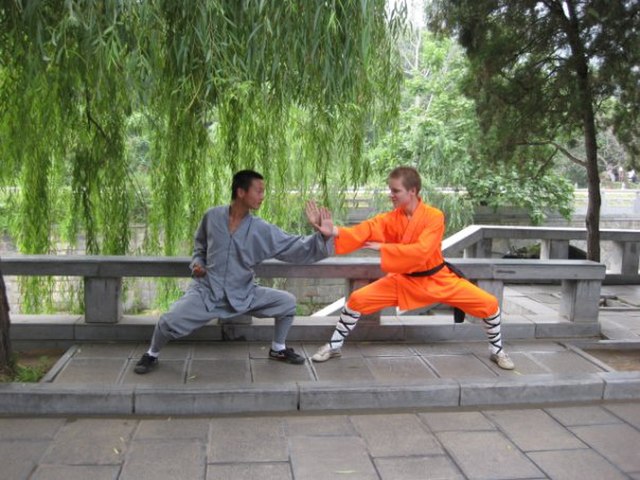
Pak Mei
Pak Mei consists of quick flow blocks, with immediate counters following them.
Pao Chui
Pao Chui is a known Kung Fu style that was made from three different Chinese martial arts styles called “Three August Ones.”
- Fuxi
- Shennong
- Gonggong
Pigua Quan (Piguaquan)
Pigua Quan, or “Chop-Hanging Boxing,” is a Kung Fu style emphasizing palm techniques.
Praying Mantis
The famous and original Praying Mantis style that different forms of Chinese martial arts styles branched from.
Sanda (Sanshou)
Sanda is the Chinese style of kickboxing practiced within China.
San Soo
San Soo is a self-defense style that consists of various grabs and throws
Shaolin Kung Fu
The famous Shaolin Kung Fu consists of various different Chinese martial arts styles practiced by Shaolin monks.
Shuai Jiao
Shuai Jiao, or Chinese jacket wrestling, is one of China’s oldest forms of grappling. It also helped influence the creation of Judo.
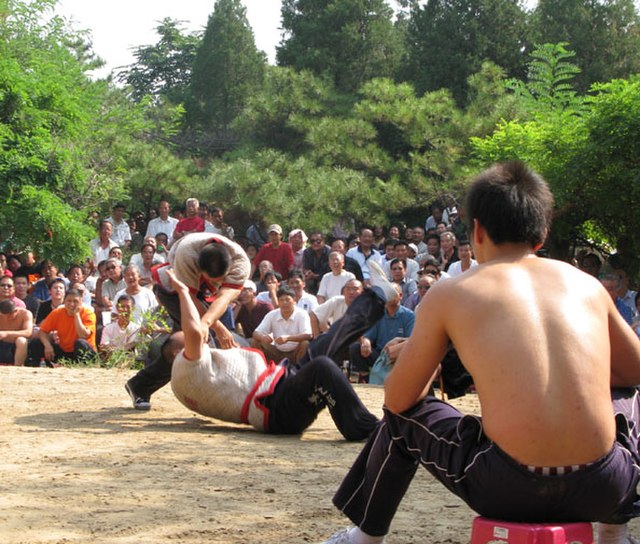
Southern Praying Mantis
The style of Praying Mantis is practiced predominantly within Southern China.
Tai Chi (Pushing Hands)
The famous internal martial arts that is practiced to improve balance and fluidity.
Tai Chi Quan
Another style of Tai Chi is practiced around the world.
Tan Tui
The name Tan Tui translates to “springing legs.” With this name, it is a style consisting of leg-dominant movements.
Tien Shan Pai
A born of Chinese boxing known for its subtle steps and movements.
Tong Bei Quan (Tongbeiquan)
One of the internal Chinese martial arts styles that has many wide and looping movements.
Wing Chun
The counter hand striking style famously created by IP Man. Bruce Lee was one of his most known students.
Wudang Quan
Wudang Quan is a term used for two specific types of Chinese martial arts styles. Wudang is named after the mountains and Shaolin style is named after the monastery.
Xingyiquan
Xingyiquan is a short-range style of Kung Fu known for its explosive arm techniques and linear movement.
Yau Kung Moon
The styles of You Kung Moon consists of various techniques and movements from a deep horse stance.
Yiquan
Yiquan is one of the unique Chinese martial arts styles that doesn’t have fixed techniques. It is a free flowing form of expression.
Yue Jia Quan (Yuejiaquan)
An alternate form of the internal martial art of Tai Chi.
Ziranmen
Ziranmen, or “Natural Boxing,” is a hand-striking style taught alongside Qigong breathing techniques.

